How to Use Neil Patel’s Google Ads Grader - NeilPatel.com
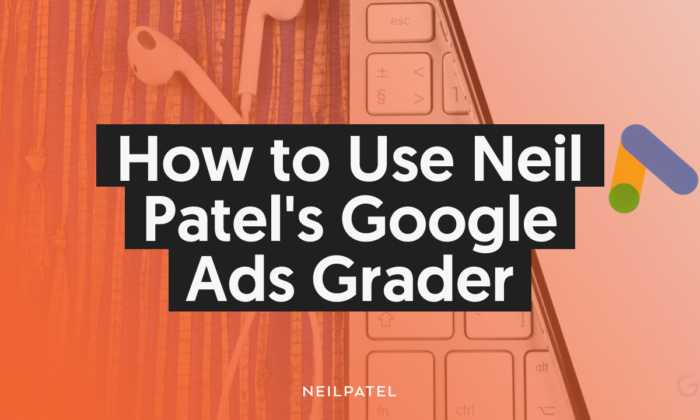
Google Ads is a fantastic way to target prospective customers, build brand awareness, and quickly get on the first page of Google.
However, it's not without its challenges. It can be easy to burn through your advertising budget with not a lot to show for it!
This is why my team and I recently launched our free Google Ads performance tool. You're just a couple of clicks away from perfectly optimized ad campaigns.
Read on to find out how it works, how to get access, and how to use it to improve your Google Ads performance.

Why Do You Need to Grade Your Google Ads?
More and more businesses are using Google Ads than ever before, with over seven million advertisers relying on it to promote their products and services to customers.
Plus, investment in PPC advertising is growing all the time. The market is predicted to be worth $190 billion by the end of 2024, an increase of nearly 16 percent since 2022.
This means Google Ads is more competitive than it used to be. It's vital to ensure your ads stand out and that they appear in front of the right people.
Grading your Google Ads performance means you can get a snapshot of how your account is doing, including where you're succeeding and where there's room for improvement.
What Can the Ads Grader Do?
Together with my team at NP Digital, we specialize in helping clients with their paid search marketing. We look at how to improve their return on ad spend (ROAS) and create ads that people want to click on.
Our Google Ads Performance Grader uses many of the same criteria we use to audit our client's ad campaigns. This means using our free Ads Grader is like having your own personal Google Ads expert on standby!
Plus, we regularly review and amend the Ads Grader, so it always takes Google Ads best practices into account. That way, you have peace of mind that any changes you make will lead to the right results.
How to Use Ads Grader to Improve Google Ads Performance
Using the Ads Grader is easy—all you need is a Google account and an active Google Ads account.
Go to the free Ads Grader tool and enter the name of your website. You'll then sign into the Google account you use to manage your Google Ads.
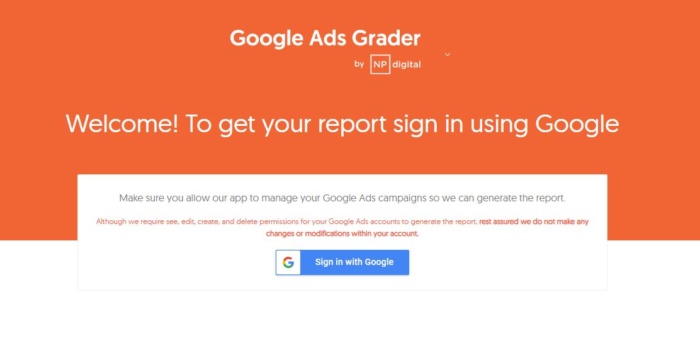
Next, you'll be asked to confirm that Ads Grader can access your Google Ads account. This is so we can analyze your data and make the right suggestions.
We need 'see, edit, create, and delete' permission to run the report. However, please be assured that we won't change or modify your account without your permission.
If you want to remove access at any time, you can do this by going to the security section of your Google Account.
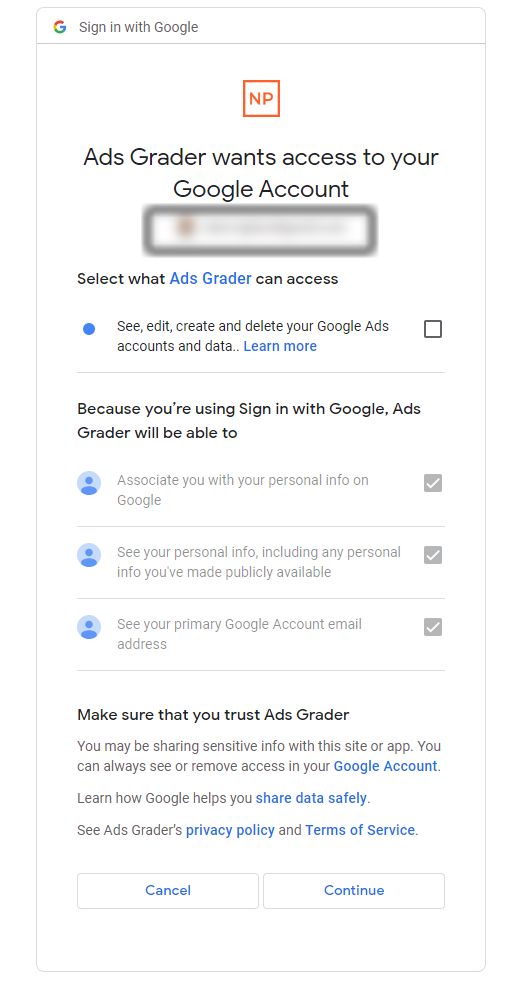
Key Ad Metrics to Look For
We've designed Ads Grader to be as simple to use as possible.
You can share the link with your team and even translate the report into six other languages—perfect if you work with an international PPC squad!
Whether you manage multiple accounts for an agency or are getting to grips with one campaign for your business, we want you to come away with lots of actionable insights.
The first thing you'll see is your ads performance grade, which is a percentage out of 100.
Don't panic if your score is lower than you thought, as you'll get lots of great hints and tips as you scroll through the report.
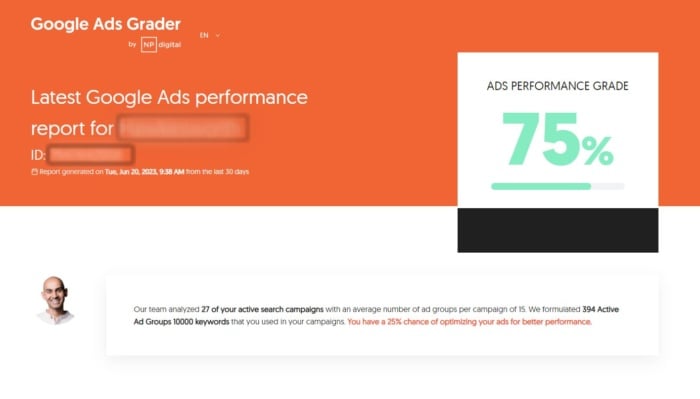
Top Improvement Opportunities
This section lists some easy ways to optimize your account for improved results, listed in order of priority.
For example, for this account, the two key recommendations are boosting the campaign budget, and moving to the Maximize Conversions bidding strategy.
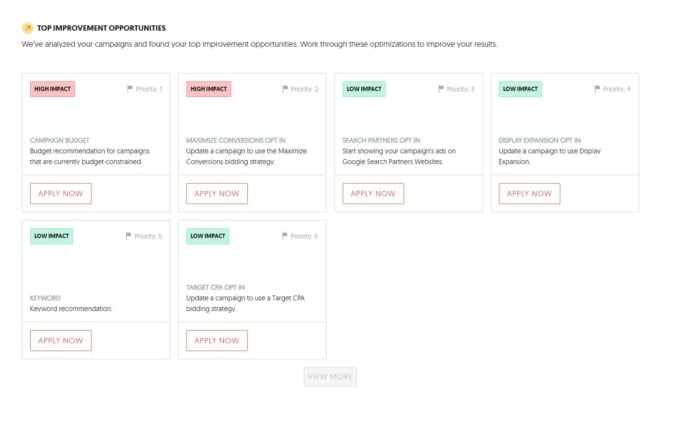
If you want to apply any of the recommendations automatically, click apply now.
Performance Overview
This section of the Google Ads performance report shows how many impressions, clicks, and conversions your campaigns get. You can filter by search, display, shopping (Performance Max), or see a general overview.
We've shown the results as a funnel, so you can see how prospective customers are moving from seeing your ad, to clicking on your ad, to converting on your website.
The performance overview also helps you identify potential issues to act on, for example, if the number of clicks or conversions drastically decreases.

Cost Evolution
This section of the report shows your average cost per click (CPC) over the last thirty days, compared with the current Google Ads benchmark.
You can use this metric to see whether your costs are increasing or decreasing and what you can do to ensure you get value for your money from Google Ads.
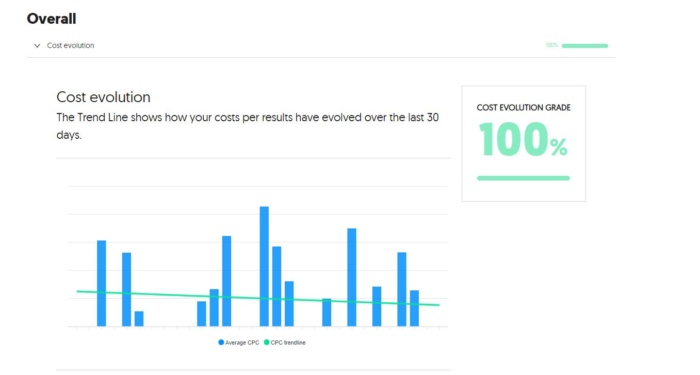
Wasted Spend
Every cent counts in Google Ads—especially if you have a small marketing budget. The wasted spend report lets you see how much money you might be spending on the wrong keywords.
This report measures the number of negative keywords you've added compared to the industry standard. As you can see, this account is on the right track, but there is room for improvement.
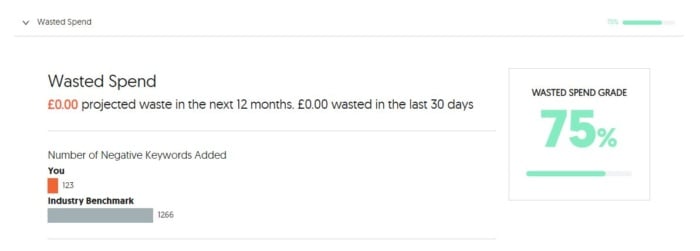
Ad Relevance Analysis
When you create an ad, Google gives you an ad strength score. The specific factors depend on the type of ad you're creating.
For example, for a responsive search ad, it takes the keywords you use, the number of headlines, and the uniqueness of your ad copy into account.
This report collates the ad strength scores across your account to see if your ads align with Google best practices.
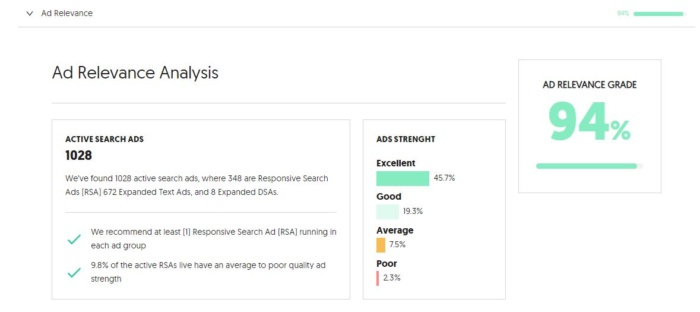
Quality Score
Quality score is a critical metric in Google Ads, measured from one to ten. The higher your score, the more relevant and useful your ad and landing page are to someone searching for a specific keyword.
Your quality score is integral to where you rank in the Google Ads auction and how much you pay.
This report shows you how the individual elements of your account are doing.
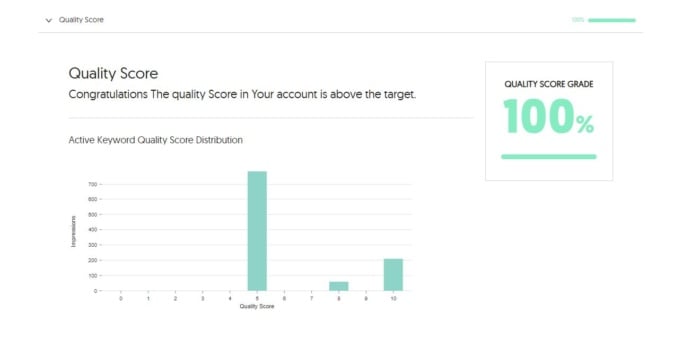
Click-through Rate
Click-through rate (CTR) is a valuable metric for Google Ads performance as it shows which ads work and which ones don't work. Ultimately you want ads that your target audience can't help but click on.
This part of the Ads Grader report shows you the average CTR across the search and display network. Ads can look different on desktop and mobile, so CTR is also segmented across these two devices.
The good news is that if there is room for improvement, Google Ads Grader will let you know the benefits of boosting your CTR. In this example, you can gain an incredible 2476 clicks and 28 conversions a month!
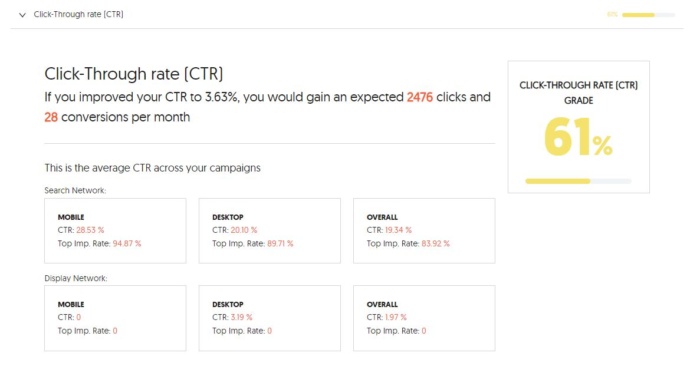
Keywords Match Type
Exact, phrase, and broad match keywords in Google Ads all have their specific pros and cons.
For example, broad match keywords are fantastic for attracting a wide audience and helping you discover new words and phrases for your SEO strategy. However, they can mean your ads are served to the wrong audience, meaning you waste money on clicks.
It's essential to get the balance right in Google Ads, and this section of the report will show you the proportion of keyword match types you're using in your campaigns.
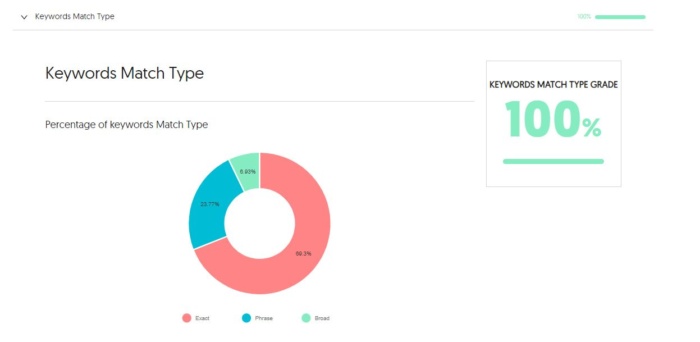
Impressions Share
As I mentioned at the start, Google Ads is a competitive place, with many businesses vying for that slot at the top of the first page. The impressions share report shows how many views your ads receive compared to the total views they could get.
This report is split into three categories:
- Share acquired. The percentage of time your ad appeared in Google Ads.
- Share lost to Ad Rank. The percentage of time your ad didn't appear in Google Ads because it ranked too low. This is usually due to poor ad quality and being outranked by competitors.
- Share lost to budget. The percentage of time your ad didn't appear in Google Ads because your budget was too low.
This example account could do better when it comes to impression share. It can do this by boosting its ad quality score, targeting the right customers, and increasing the budget for high-performing keywords.
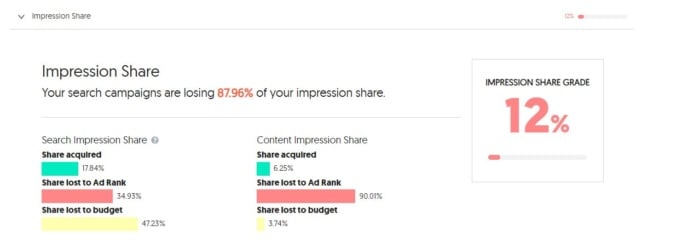
Google Ads Best Practices
This final section of the report looks at Google Ads best practices and how you can ensure your account stays compliant.
Staying on the right side of Google best practices can give your Google Ads performance a welcome boost. It not only helps improve your quality score, increasing the chances of appearing at the top of the Ads results, but it can mean a lower cost-per-click too.
Google takes the following seven factors into consideration when it comes to best practices:
- Multiple text ads. Each ad group should have at least two active text ads. This means your ads are more likely to target the needs of Google users.
- Language targeting. You should target your campaigns to focus on specific languages. This means customers don't see ads they can't understand.
- Mobile bid adjustments. All your ad groups are using mobile bid modifiers. This means you're adjusting your bids depending on whether people use desktops or smartphones.
- Geo-targeting. All your campaigns should employ some form of geo-targeting; for example, you should only show ads intended for US customers in the US. This means the right audiences see the right ads.
- Conversion tracking. You have conversions set up for your ad campaigns. This means you can see which results in the most leads, sales, and other enquiries.
- Negative keywords. You've set up negative keywords for your Google Ads account. This means you've taken steps to target and refine your campaigns.
- Use of Google Ad extensions. You're using assets, for example, site links or call extensions. These add extra value to your ads and make them more eye-catching.
A 100 percent grade in this section means an optimized campaign performance.
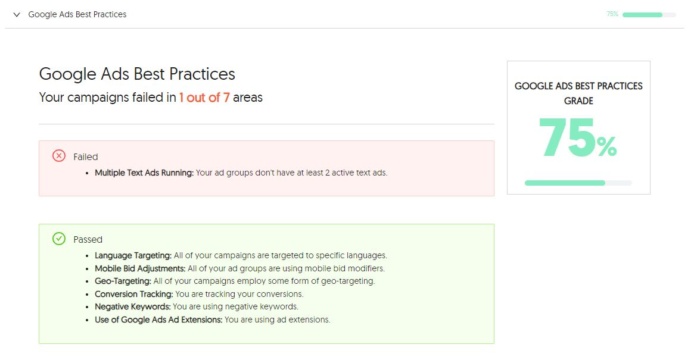
Conclusion
Google Ads is a substantial investment for brands, and like all marketing channels, it's essential to get it right.
The Google Ads Performance Grader means you can get a quick and simple health check for your account and clear guidelines on boosting your ROAS.
Why not run a report, uncover your findings, optimize your campaigns, and run another report in 30 days to see how your score has improved?
Give my free Ads Grader tool a try today!
Have you tried the free Ads Grader? What insights did you gain?

See How My Agency Can Drive More Traffic to Your Website
- SEO - unlock more SEO traffic. See real results.
- Content Marketing - our team creates epic content that will get shared, get links, and attract traffic.
- Paid Media - effective paid strategies with clear ROI.
Book a Call
Are You Using Google Ads? Try Our FREE Ads Grader!
Stop wasting money and unlock the hidden potential of your advertising.
- Discover the power of intentional advertising.
- Reach your ideal target audience.
- Maximize ad spend efficiency.
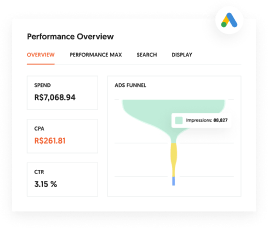
Comments
Post a Comment